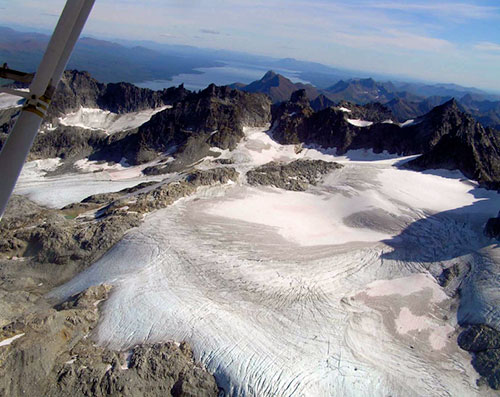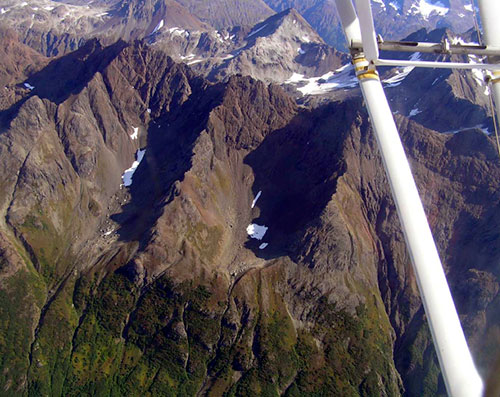
Southwestern Alaska Glaciers Rapidly DisappearingOver a 50-year period, 50 percent of their area lost
February 04, 2015
The research team had conducted an aerial survey of the glaciers to verify their presence or absence. They also compared the size of the glaciers using aerial photographs and satellite images from 1957, 1984, and 2009 and found that the glaciers had lost about 50 percent of their area. At this rate of melting, all of the glaciers in the Ahklun Mountains will be gone by the end of this century.
Ahklun Mountain glaciers on the Mt. Waskey massif, late summer 2006.
Located in the northeast corner of the Togiak National Wildlife Refuge, the glaciers of the Ahklun Mountains are the only glaciers in southwestern Alaska, north of the Alaska Peninsula. These glaciers feed meltwater in the summertime to four major salmon watersheds and a wide array of pristine lakes. Though some research on these glaciers had been done previously, they had not been studied comprehensively to determine the rate they are receding. “This is not the first time these glaciers have receded in part or completely,” said co-author, Darrell Kaufman, professor of geology at Northern Arizona University. “The thing that is unique is that the rate of change is so rapid we’re able to document the changes as they occur, rather than long after the fact.”
Empty cirques that contained glaciers in 1972.
Twenty thousand years ago, the glacial ice in this region covered more than 6,000 contiguous square miles, but is now reduced to small fragments covering approximately 13 square miles. As the glaciers disappear, the water and sediment they contribute to the river drainages and lakes will go with them. Other co-authors on this study were Tess McDaniel and Jai Chowdry Beeman from Northern Arizona University. The study was funded by the U.S. Fish and Wildlife Service, Togiak National Wildlife Refuge, and the National Science Foundation.
Edited by Mary Kauffman, SitNews
On the Web:
Source of News:
|
||

